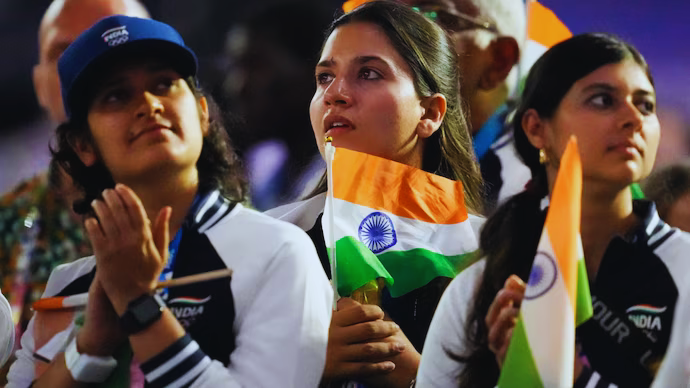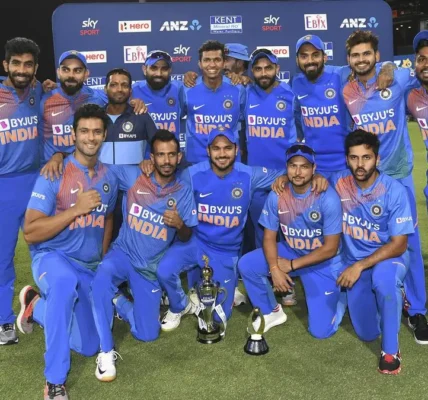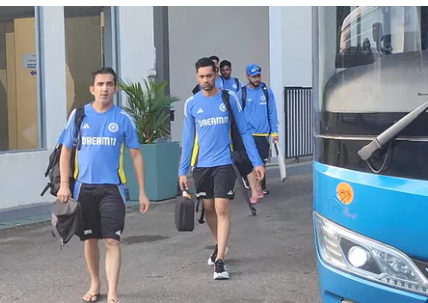Introduction
India’s performance in the 2024 Olympics was a mix of triumph and introspection. While the nation celebrated a record haul of medals, a striking pattern emerged—66% of these medals came from athletes hailing from just 1.4% of the country’s land area. This concentration of success in specific regions has sparked discussions about the uneven development of sports across India. Understanding the factors behind this disparity is crucial for fostering a more balanced approach to sports development in the future.
India’s Journey in the 2024 Olympics
Medal Tally and Achievements
India’s medal tally in the 2024 Olympics was impressive, with athletes winning medals across a range of sports, from traditional strongholds like wrestling and boxing to newer disciplines such as athletics and shooting. The country saw a significant improvement in its overall ranking, reflecting years of investment in sports infrastructure, training, and athlete support.
Comparison with Previous Olympics
When compared to previous Olympics, India’s performance in 2024 marked a clear upward trajectory. The number of medals increased, and so did the number of sports in which India secured victories. This improvement underscores the positive impact of targeted investments and the emergence of a new generation of athletes who are breaking barriers on the international stage.
The Geographical Disparity in Medal Wins
Analysis of the 1.4% Land Area Contribution
One of the most intriguing aspects of India’s 2024 Olympic success was the geographical concentration of medal winners. A staggering 66% of the medals were won by athletes from a mere 1.4% of the country’s land area. This area primarily includes states like Punjab, Haryana, and parts of the Northeast. The reasons for this concentration are multifaceted and rooted in a combination of historical, cultural, and infrastructural factors.
Historical Context of Regional Sports Success
The dominance of certain regions in sports is not a new phenomenon. Historically, states like Punjab and Haryana have produced a disproportionate number of top athletes. The cultural emphasis on physical fitness, combined with early exposure to sports like wrestling and athletics, has created a fertile ground for nurturing Olympians. In contrast, other regions, despite having potential, have lagged due to lack of resources and infrastructure.
Factors Behind Regional Dominance in Sports
Several factors contribute to the regional dominance in sports. These include the presence of robust sports infrastructure, government and private sector support, and a strong cultural affinity for sports. In regions like Punjab and Haryana, sports are not just an activity but a way of life, with many families encouraging their children to pursue athletics or wrestling from a young age.
Key Regions Contributing to India’s Medal Tally
Punjab – The Powerhouse of Indian Athletes
Punjab has long been a cradle for Indian sports talent. The state’s athletes have excelled in various disciplines, especially in field hockey, wrestling, and athletics. The state’s sporting culture is deeply rooted in its history and traditions, with local games often serving as a foundation for Olympic disciplines.
Notable Olympians from Punjab
Several Olympians from Punjab have made the nation proud, including athletes like Milkha Singh, popularly known as the “Flying Sikh,” and recent stars in wrestling and boxing who have continued the legacy. These athletes have not only won medals but have also inspired a generation of sports enthusiasts in the region.
Haryana – A Consistent Contributor
Haryana has consistently been one of India’s top-performing states in the Olympics. The state’s success can be attributed to its well-established sports academies, government support, and a culture that celebrates physical prowess.
Wrestling and Boxing: Haryana’s Strengths
Wrestling and boxing are the sports where Haryana excels, contributing significantly to India’s Olympic medal tally. The state’s emphasis on these sports is evident in the numerous training centers and local competitions that groom young talent. This focus has resulted in the emergence of world-class athletes who have repeatedly brought glory to the nation.
Northeast India – The Rising Star
Northeast India, particularly states like Manipur and Assam, has emerged as a new hub for sports in the country. Despite its small size and limited resources, the region has produced a remarkable number of athletes who have excelled at the national and international levels.
Manipur and Assam’s Emerging Talent
Athletes from Manipur and Assam have made their mark in sports like boxing, weightlifting, and archery. The region’s unique combination of natural talent, cultural affinity for sports, and increasing access to training facilities has played a crucial role in its rise as a sporting powerhouse.
The Role of Infrastructure in Sports Development
The Impact of Sports Academies and Facilities
The availability of sports academies and world-class facilities is a major factor behind the success of athletes from certain regions. States like Haryana and Punjab have invested heavily in sports infrastructure, creating environments where athletes can train under the best coaches and access the latest equipment. This has given them a significant advantage over athletes from regions with less developed sports infrastructure.
Government Initiatives in High-Performing Regions
Government initiatives have played a crucial role in the success of high-performing regions. Schemes that offer financial support, scholarships, and job guarantees for athletes have made sports a viable career option for many. Additionally, the establishment of centers of excellence and sports universities in these regions has further bolstered their ability to produce top-tier athletes.
The Role of Private Sector in Sports Promotion
The private sector’s involvement in sports promotion, through sponsorships and the establishment of private academies, has also contributed to the success of athletes from certain regions. Companies and wealthy individuals have increasingly seen sports as a valuable investment, leading to better facilities, training programs, and exposure for athletes.
The Influence of Culture and Tradition
Sports as a Cultural Identity in Certain Regions
In regions like Punjab and Haryana, sports are deeply embedded in the cultural fabric. From a young age, children are encouraged to participate in sports, with many families viewing athletic success as a matter of pride and honor. This cultural emphasis on sports has been a significant driver of the regions’ Olympic successes.
Traditional Sports and Their Impact on Olympic Disciplines
Traditional sports like kabaddi and kushti (wrestling) have a strong presence in regions like Punjab and Haryana. These sports not only keep the youth engaged but also serve as a training ground for Olympic disciplines. The skills and physical conditioning developed through traditional sports often translate into success in international competitions.
Challenges Faced by Underrepresented Regions
Lack of Infrastructure and Support
While some regions have flourished, others have struggled due to a lack of infrastructure and institutional support. Many parts of India do not have access to basic sports facilities, and talented athletes often go unnoticed due to the absence of scouting programs and professional coaching.
Socioeconomic Barriers to Sports Participation
In many regions, socioeconomic factors pose significant barriers to sports participation. Families in rural or economically disadvantaged areas may prioritize education and work over sports, viewing athletic pursuits as less viable or prestigious. This mindset, coupled with the lack of financial support for athletes, limits the pool of talent that could potentially compete at the highest levels.
Steps Needed to Promote Sports Nationwide
To address these disparities, a concerted effort is needed to promote sports nationwide. This includes investing in sports infrastructure in underrepresented regions, providing financial incentives for athletes, and launching awareness campaigns that highlight the benefits of sports. By doing so, India can tap into a wider talent pool and ensure that every region has the opportunity to contribute to the nation’s Olympic success.
Future Prospects and Recommendations
Lessons from High-Performing Regions
The success of high-performing regions like Punjab, Haryana, and the Northeast offers valuable lessons for the rest of the country. Their emphasis on early sports engagement, strong infrastructure, and cultural support for athletes should serve as a model for other regions looking to improve their sports performance.
Expanding Sports Programs Across India
To build on the success of the 2024 Olympics, India must expand its sports programs across the country. This includes establishing more sports academies, increasing funding for grassroots sports initiatives, and encouraging public-private partnerships to develop sports infrastructure in underserved areas.
Encouraging Grassroots Development
Grassroots development is essential for long-term success in sports. By introducing sports programs in schools and communities, and by providing access to professional coaching and competitions, India can nurture the next generation of Olympians from a broader range of regions.
Conclusion
India’s performance in the 2024 Olympics was a significant achievement, but it also highlighted the stark regional disparities in sports success. By understanding the factors behind these disparities and taking steps to address them, India can work towards a more equitable and successful sports future. Expanding access to sports, investing in infrastructure, and fostering a culture that values athletic achievement across all regions will be key to ensuring that India’s Olympic success is shared by all.
FAQs
Why is there a regional disparity in India’s Olympic medals?
The regional disparity in India’s Olympic medals can be attributed to factors such as the availability of sports infrastructure, cultural emphasis on sports, and government support in certain regions. States like Punjab and Haryana have historically been more successful due to their strong sports traditions and better facilities.
What role does infrastructure play in sports success?
Infrastructure plays a critical role in sports success by providing athletes with access to training facilities, equipment, and professional coaching. Regions with better infrastructure tend to produce more successful athletes because they can train more effectively and consistently.
How can underrepresented regions improve their sports performance?
Underrepresented regions can improve their sports performance by investing in infrastructure, offering financial incentives to athletes, and promoting sports at the grassroots level. Government and private sector support are also crucial in providing the necessary resources and opportunities for athletes in these areas.
What are the future prospects for India in the Olympics?
India’s future prospects in the Olympics are promising, especially if the country continues to invest in sports development across all regions. Expanding access to sports and nurturing talent from underrepresented areas will be key to achieving greater success in future Olympics.
How can India ensure more balanced sports development across the country?
To ensure more balanced sports development, India needs to focus on building infrastructure in underdeveloped regions, promoting sports at the grassroots level, and providing equal opportunities for athletes across the country. Collaboration between the government, private sector, and communities will be essential in achieving this goal.









